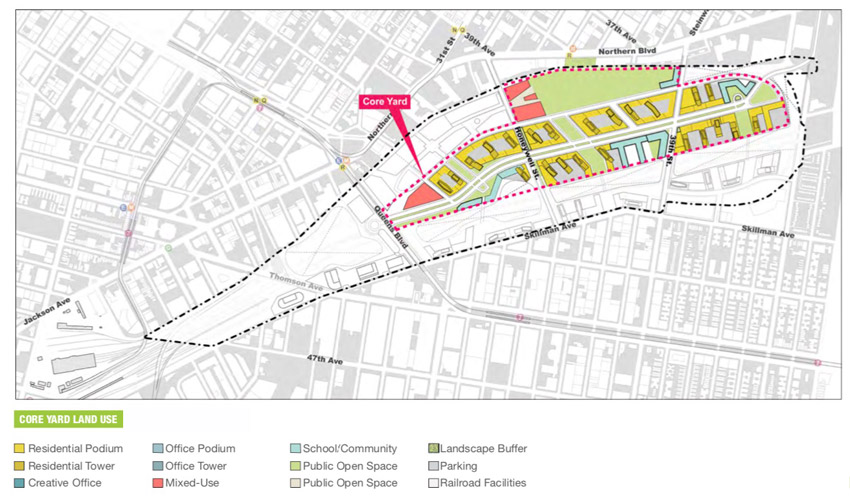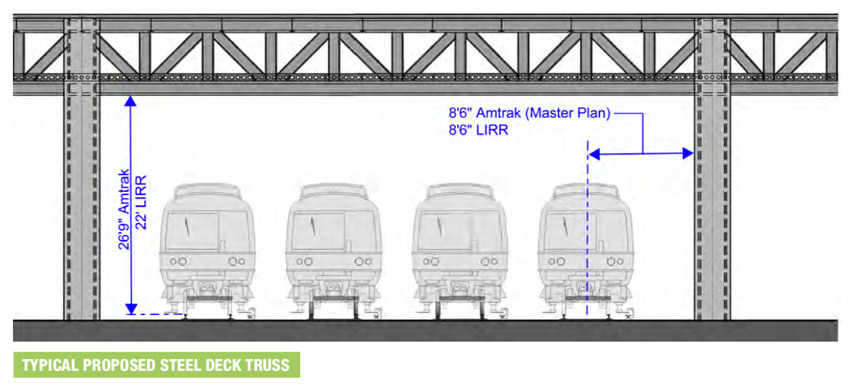Gaining Urban Space: Platforms Over Rail Yards
Code Compliance
Another key issue with platform projects is determining which codes and standards apply, which is not so straightforward.
For example, Robbins asks, “If you build a deck over a railyard, does that make the deck a building, so then the building codes apply? Or if there’s a building that goes through that deck and anchors into the ground, how much of the deck around the building is counted as part of the building?”
This is a grey area with a lot of ambiguity and needs to be carefully evaluated on a project-by-project basis.
Take Hudson Yards. Here, the trains are an Metropolitan Transportation Authority facility that is governed by the New York State Code, in addition to other rail codes set by the Federal Railway Agency. However, the buildings on the site are all governed by the New York City Building Code.
“While the codes are similar and have similar performance goals, there are differences and all parties need to be aligned to avoid conflicts between codes and requirements for the projects,” Gottlieb says. “Making sure that everyone is aligned on which codes the project is following and the critical overlaps is important to the success of the project.”
The sheer number of regulatory documents involved shows the extent to which codes impact design requirements. Ultimately, the platform must satisfy all applicable codes, regulations, and requirements that include, among other things, building, transportation, railroad codes, fire, smoke exhaust, security/blast, and train impact regulations. “Sizes of structural members, their location within the yards, and sometimes even their shape are all affected,” Chan says.
In addition to the issue of codes, these overbuild projects must address a few unique design requirements. For instance, the platforms need to account for heat buildup from the trains. In order to address this for Hudson Yards, an extensive CFD analysis was conducted, and passive air intakes were located and designed to allow the heat buildup to stay within acceptable limits. The heat is then dissipated through this ventilation; three fan plants exhaust the air while three plants provide fresh air to the facility.
The decks are open on the sides, providing some fresh air, “but you still need the supersized fans hung on the ceiling of the deck to help move the air around and provide the ventilation,” Robbins adds.
Maximum and average temperatures of the structural elements were also derived from the CFD analysis, which, in turn, impacted the structure’s fire protection design, Smilow adds.
Another unique issue is emergency egress. In the planning and design, the building team must ensure there are multiple ways that people can exit from under the deck to the surface.
Designers must address the issue of stormwater retention. For another project where FXCollaborative performed a feasibility study, the rail yards’ locale required the proposed project to conform to stricter stormwater standards. Consequently, the design had to incorporate stormwater retention tanks. Such tanks tend to be fairly large and can encompass a significant part of the infrastructure.
The Future of Platforms
With urban population growth not anticipated to slow down any time soon, urban planners and designers anticipate that platform building over rail yards and transportation corridors will really take hold.
In fact, Estevez sees a new set of factors converging. City and state agencies have realized the value of leasing the air space above their properties to private developers; railyards are being sought as a way to renew cities and turn a profit; and the initial investments, risks, and logistics of these projects are starting to make financial sense.
“I think this is going to very much be a growing area,” agrees Robbins.
While these initial overbuilds will struggle with this new way of developing real estate, like any new venture, the more it’s done, the more efficient it will become, and the less costly it will be.
“These current projects are building a knowledge base, so it will become a little easier and more feasible for future projects,” Robbins says. “My hope is that it changes the way some of the transit companies who own large amounts of real state start to think about their real estate and the integration of development and infrastructure.”











